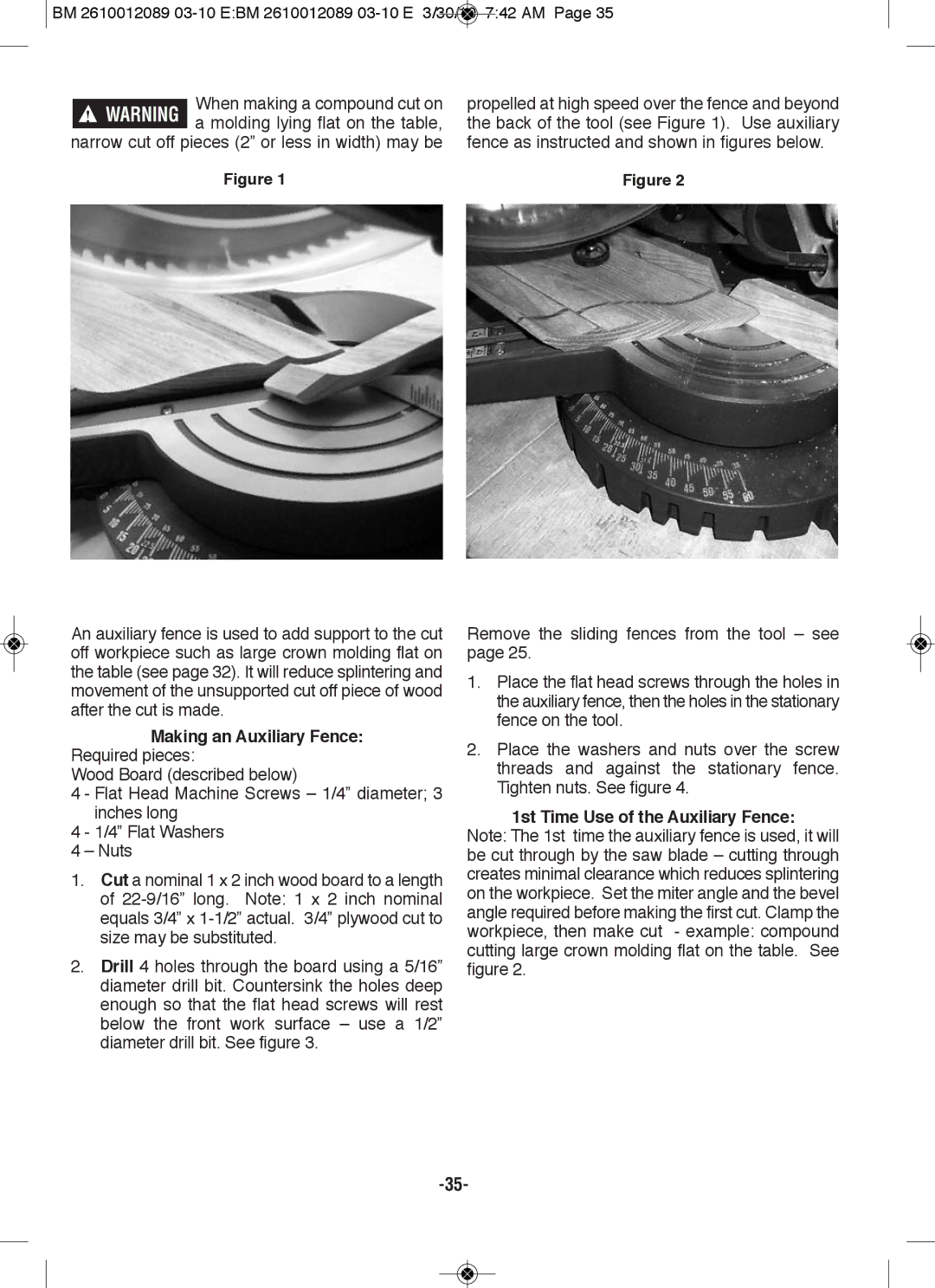
![]() BM 2610012089
BM 2610012089
|
| When making a compound cut on | propelled at high speed over the fence and beyond |
| ! WARNING | ||
|
| a molding lying flat on the table, | the back of the tool (see Figure 1). Use auxiliary |
|
| ||
narrow cut off pieces (2” or less in width) may be | fence as instructed and shown in figures below. | ||
|
| figure 1 | figure 2 |
An auxiliary fence is used to add support to the cut off workpiece such as large crown molding flat on the table (see page 32). It will reduce splintering and movement of the unsupported cut off piece of wood after the cut is made.
Making an Auxiliary fence: Required pieces:
Wood Board (described below)
4 - Flat Head Machine Screws – 1/4” diameter; 3 inches long
4 - 1/4” Flat Washers
4 – Nuts
1.Cut a nominal 1 x 2 inch wood board to a length of
2.Drill 4 holes through the board using a 5/16” diameter drill bit. Countersink the holes deep enough so that the flat head screws will rest below the front work surface – use a 1/2” diameter drill bit. See figure 3.
Remove the sliding fences from the tool – see page 25.
1.Place the flat head screws through the holes in the auxiliary fence, then the holes in the stationary fence on the tool.
2.Place the washers and nuts over the screw threads and against the stationary fence. Tighten nuts. See figure 4.
1st Time Use of the Auxiliary fence:
Note: The 1st time the auxiliary fence is used, it will be cut through by the saw blade – cutting through creates minimal clearance which reduces splintering on the workpiece. Set the miter angle and the bevel angle required before making the first cut. Clamp the workpiece, then make cut - example: compound cutting large crown molding flat on the table. See figure 2.
